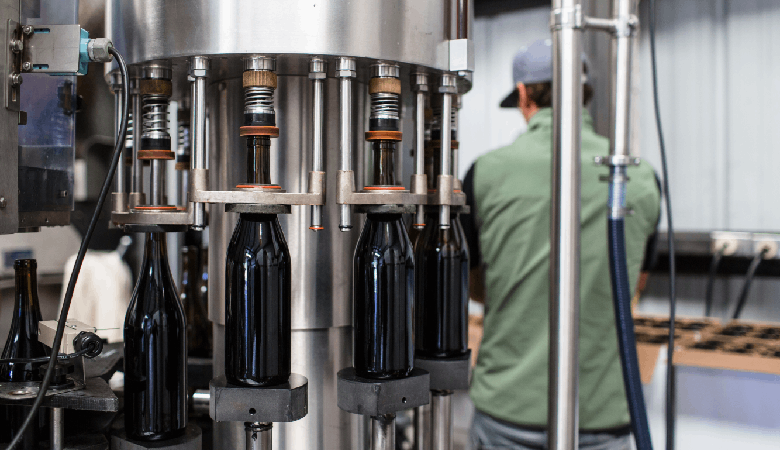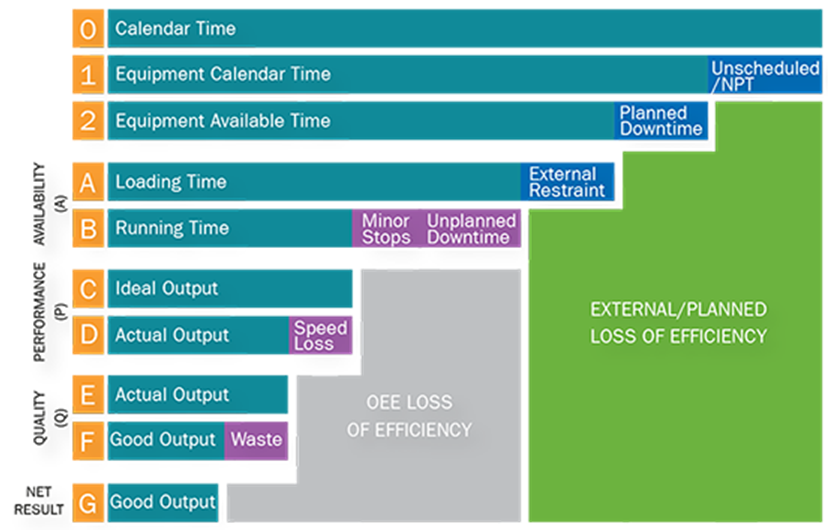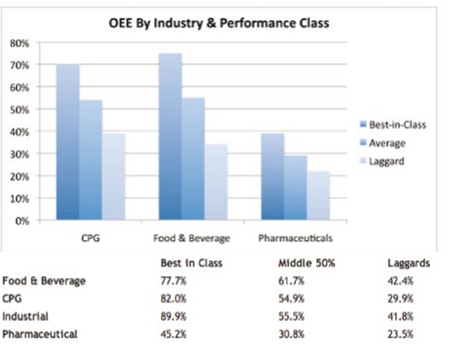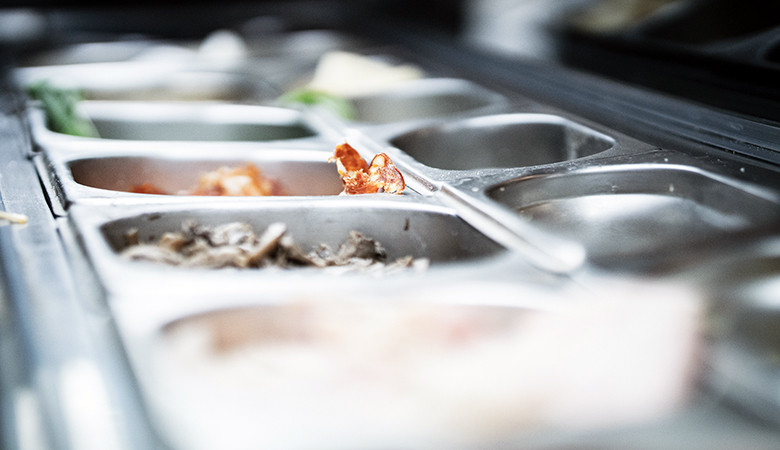Lavagem Industrial / Artigos
Mais produtividade, menos desperdício: o que é o OEE
O OEE é uma métrica essencial para garantir a eficiência dos equipamentos. Descubra o que significa, como medir e recomendações para aplicar na prática.

 16 minutos de leitura
16 minutos de leitura
2021-09-23 13:21:29
O OEE é uma métrica essencial para garantir a eficiência dos equipamentos. Descubra o que significa, como medir e recomendações para aplicar na prática.
Num mundo 4.0, nunca foi tão importante reduzir custos e aumentar a eficiência. É uma questão de sobrevivência no mercado: à medida que a concorrência se torna cada vez mais global, aumenta a pressão para entregar o produto certo, no momento certo e com o custo certo. E na hora de aferir a eficiência dos equipamentos, poucos indicadores são tão urgentes, completos e acionáveis como o OEE. Descubra o que significa este conceito e como aplicar na sua empresa.
O que é o OEE?
O OEE ou Overall Equipment Efficiency identifica a parte do tempo disponível para operar que é efetivamente produtivo. O tempo produtivo é aquele em que uma máquina está a operar com a qualidade esperada, à velocidade prevista.
O resultado é uma percentagem que divide o tempo produtivo pelo tempo total disponível. Quanto mais elevada for essa percentagem, mais eficiente é o equipamento. Mas para tirar vantagem deste indicador é necessário ir um pouco mais fundo e perceber os elementos que o compõem.
Porquê medir o OEE?
A principal vantagem do OEE é que leva em consideração as perdas de produção e divide-as em três categorias: disponibilidade, desempenho e qualidade. Desta forma, é possível identificar mais especificamente as áreas em que são necessárias melhorias, entre as quais:
- Paragens programadas, como manutenções;
- Paragens não programadas, como avarias;
- Microparagens, tipicamente abaixo de 5 minutos, como as causadas por configurações da máquina e que muitas vezes não são sequer registadas pelos operadores;
- Setups, o tempo de configuração de novos programas de lavagem;
- Velocidade abaixo do previsto, sempre que a máquina está a funcionar a uma velocidade inferior ao recomendado pelo fabricante;
- Falhas de qualidade, sempre que o output final não cumpre os padrões de qualidade ou não passa na inspeção.
OS ELEMEMENTOS QUE COMPÕEM O OEE

Juntas, estas perdas formam uma única métrica chamado OEE, um indicador que fornece uma imagem completa da eficiência. Desta forma, o OEE permite medir, comparar e melhorar o desempenho de máquinas, células de trabalho, linhas de produção e até mesmo de fábricas inteiras.
O impacto de uma melhoria no OEE, mesmo que ligeira, pode ser muito significativo. Por exemplo, se uma fábrica gera € 10 milhões de EBITDA a cada ano e possui um OEE de 70%, cada ponto percentual de OEE vale € 142.857. Ou seja, se conseguir subir o OEE em 1pp, terá um aumento de EBITDA de 1.4%.
Num equipamento de lavagem, como em qualquer outra máquina, é possível e recomendado medir regularmente o OEE, como ponto de partida para melhorias. Desta forma, as organizações podem tornar este processo mais eficiente, rentável e sustentável.
Como medir o OEE na lavagem?
Aplicado à lavagem, o OEE representa a percentagem de tempo em que a máquina está a lavar os utensílios ao ritmo definido pelo fabricante (sem perdas de velocidade), sem interrupções (sem perdas de tempo por paragem) e com a qualidade prevista.
Por exemplo, se uma dada máquina de lavagem operou durante as 8 horas de um turno à velocidade de ciclo ideal e com uma excelente qualidade de lavagem, o OEE será de 100%. Mas se funcionou apenas durante 4 horas, então o OEE já passa a 50%. E se durante essas 4 horas, operou a metade da velocidade que deveria, o OEE é de 25%. Se, para além disso, tiver lavado corretamente apenas metade das peças, o OEE seria 12.5%.
Uma forma mais simples de calcular o OEE, mas que oferece menos detalhe, é simplesmente dividir o número real de utensílios corretamente lavados pelo total teórico. Por exemplo, se uma máquina de lavar industrial tem capacidade para lavar 700 utensílios por hora, mas na realidade só está a conseguir lavar 70, então o OEE é de 10%. Mas esta forma mais simplista não identifica onde estão as perdas e por isso oferece menos informação para atuar.
Qualquer que seja o método utilizado, o OEE fornece uma métrica padrão para medir, comparar e melhorar a eficiência dos equipamentos e é largamente utilizado em áreas como Lean, SixSigma e TPM (Total Productive Maintenance).
Quais os valores de referência para o OEE?
Um OEE de 100% é o equivalente a uma produção perfeita: fabricam-se ou lavam-se apenas peças boas, o mais rápido possível e sem tempo de inatividade. Já um OEE de 85% é considerado de classe mundial para produção discreta (ou peça a peça), onde se inclui a lavagem. Para muitas empresas, é um objetivo de longo prazo adequado. Já um OEE de 60% é muito comum na produção discreta, mas indica que há espaço para melhorias.
Mas os valores de referência variam também por setor, sendo tipicamente mais elevados na Indústria e menores no Alimentar ou Farmacêutico, por exemplo.
VALORES DE REFERÊNCIA DO OEE POR SETOR

No entanto, é necessária cautela na utilização de benchmarks de OEE, visto que nem todas as empresas utilizam a mesma fórmula de cálculo. É comum encontrar gestores que excluem, por exemplo, o tempo de manutenção programada do cálculo, por não o considerarem uma perda. No entanto, a fórmula mais “purista” inclui todos estes elementos no cálculo.
Como melhorar o OEE na lavagem?
A melhoria do OEE resulta num processo mais eficiente, rentável e ecológico. Estas são algumas das formas de o conseguir.
Recolha de dados em tempo real
O primeiro passo para melhorar o OEE é recolher os dados. Este registo pode ser feito, numa primeira fase e para efeitos de teste, de forma manual – recorrendo a registos dos operadores. Mas, a longo prazo e com o objetivo de melhoria contínua, a medição deve ser automatizada e acompanhada em tempo real.
O equipamento de lavagem deve ser capaz de registar todos os parâmetros de lavagem (incluindo a velocidade), o output de cada ciclo, o tempo de funcionamento e de paragem (incluindo microparagens). Desta forma, é possível calcular o OEE, enviar alertas automatizados quando o valor for abaixo do esperado e acionar cadeias de ajuda que notificam as equipas de suporte, mesmo sem a intervenção do operador.
Benchmark interno e externo
Com os dados recolhidos e o OEE calculado, é possível medir, comparar, analisar, identificar as causas-raiz de um OEE baixo e definir um plano de ação.
Pode concluir, por exemplo, que as perdas de disponibilidade (o tempo de paragem) numa dada máquina são muito superiores à da média da organização. Ou que os parâmetros introduzidos pelos operadores não são os mais indicados ao tipo de utensílios a lavar.
A partir daqui, é possível desenhar melhorias específicas para aquela máquina, naquele indicador, ao invés de tentar implementar medidas genéricas. Os benchmarks devem ser feitos a nível interno, entre máquinas e departamentos, mas também com as melhores práticas do setor.
Reduzir setups
O setup é a atividade de preparar o próximo ciclo de lavagem. Inicia-se no momento em que o ciclo anterior começa a abrandar e só está completo quando a próxima lavagem atingir a velocidade de cruzeiro. Envolve uma parte física (de preparação dos utensílios) e outra digital (de configuração do programa).
Numa máquina de lavar doméstica, seria o tempo que demora a tirar os pratos limpos, a carregar os sujos e a programar um novo ciclo. Mas as máquinas de lavar industriais, como a Multiwasher, permitem acelerar os tempos de setup de duas formas:
- Dispõem de um dashboard intutitivo com capacidade para pré-gravar até 20 programas. Para iniciar um novo ciclo de lavagem, o operador apenas tem de escolher e clicar. Todas as configurações e parâmetros (temperatura, velocidade, quantidade de detergente, etc) estão guardados, o que reduz o tempo de setup e assegura uma lavagem otimizada;
- Utilizando dois carros, permite fazer a carga e descarga de utensílios, enquanto decorre o ciclo e lavagem.
Aumentar a qualidade da lavagem
Sempre que um utensílio não fica bem lavado e tem de reentrar no processo, o OEE sofre. Por isso, melhorar a qualidade da lavagem é essencial para um processo produtivo – o que significa que será mais rentável e ecológico, com menor consumo de água e energia.
Com recurso a um luminómetro, um aparelho que mede a quantidade de luz gerada pela adenosina trifosfato (ATP), fonte de energia presente em células animais, vegetais, bacterianas e fúngicas, é possível avaliar de forma quantitativa o resultado de cada ciclo de lavagem. Quanto menor for a quantidade de luz gerada, mais limpo estará o utensílio a lavar.
Por exemplo, na área Alimentar, o máximo é de 500 unidades de luz. Um resultado acima deste valor é indicativo de presença de organismos numa concentração demasiado elevada. Já na Saúde, os requisitos são de 100 unidades de luz (exceto em blocos operatórios, onde é ainda mais restrito). Na Somengil, desenhámos a Multiwasher para obter níveis de higienização elevados e pensados para os padrões mais exigentes de cada indústria.
Diminuir microparagens
As microparagens são dos fatores mais difíceis de registar e, por isso, de melhorar. Acontecem sempre que a máquina para devido a um motivo não previsto, como uma pequena avaria ou ajuste. Por definição, não duram mais de 5 minutos, mas é o acumular destas pequenas interrupções que, ao fim de um turno, dia, ano, prejudica o desempenho da máquina.
As microparagens podem ser minimizadas com uma correta manutenção. Para isso, é importante seguir o plano desenhado pelo fabricante – e que o plano seja personalizado a cada caso. Por outro lado, quando ocorrem microparagens, a velocidade de resposta é essencial pelo que os aparelhos devem ser desenhados para serem ergonómicos e intuitivos.
Finalmente, a formação aos operadores em tarefas de manutenção simples – pequenas reparações e substituições – evita o recurso a equipas especializadas, que normalmente demoram tempo precioso a chegar ao local.
Na Somengil, os nossos equipamentos são pensados para simplificar as intervenções dos operadores, mesmo em alturas de grande pressão de tempo. Por exemplo, um sistema visual de luzes indica o estado da operação a qualquer momento. Também é possível carregar e descarregar a máquina mantendo uma postura correta e todas as informações estão disponíveis num dashboard de fácil utilização.
Somengil, eficiência ilimitada
A eficiência sente-se. É mais do que a redução de custos – é um estado de fluidez nos processos, em que todos os participantes, pessoas e máquinas, estão em perfeita sintonia. Para atingir este objetivo, trabalhamos de forma contínua para eliminar todos os obstáculos a uma lavagem ininterrupta, eficiente e de elevada qualidade.
Como resultado, o OEE dos nossos equipamentos é muito superior aos das soluções de lavagem doméstica – prejudicados por muitas tarefas manuais - e de outras opções industriais – que não atingem a mesma qualidade de lavagem, o mesmo nível de registo de dados, ou setups tão rápidos. Marque um webinar personalizado para as suas operações e descubra qual poderia ser o seu OEE.
Também pode gostar

Lavagem Industrial / Artigos
Food Service: guia completo para escolher uma máquina de lavagem industrial
Será que sabemos mesmo o que comemos? Os dados mostram que é 10 vezes mais provável que um surto de doenças transmitidas por alimentos tenha orig...
Postado em 2024-03-08

Lavagem Industrial / Artigos
A verdade sobre a lavagem de moldes: não funciona (a menos que automatize)
A lavagem de moldes e formas pode ser uma tarefa ingrata sem as ferramentas adequadas. Descubra como a fazer da maneira certa com uma máquina de...
Postado em 2025-01-09

Lavagem Industrial / Artigos
Recipientes gastronorm: tudo o que precisa de saber para os manter higienizados
Os recipientes gastronorm são essenciais para a organização e higiene da sua cozinha. Descubra como os manter imaculados e evitar incidentes alim...
Postado em 2025-01-16






















 Portugal
Portugal United Kingdom
United Kingdom United States
United States France
France Spain
Spain Germany
Germany Romania
Romania Italy
Italy Czech Republic
Czech Republic Finland
Finland Hungary
Hungary Slovakia
Slovakia Greece
Greece Lithuania
Lithuania South Korea
South Korea Russia
Russia Saudi Arabia
Saudi Arabia Poland
Poland Brasil
Brasil Hebrew
Hebrew